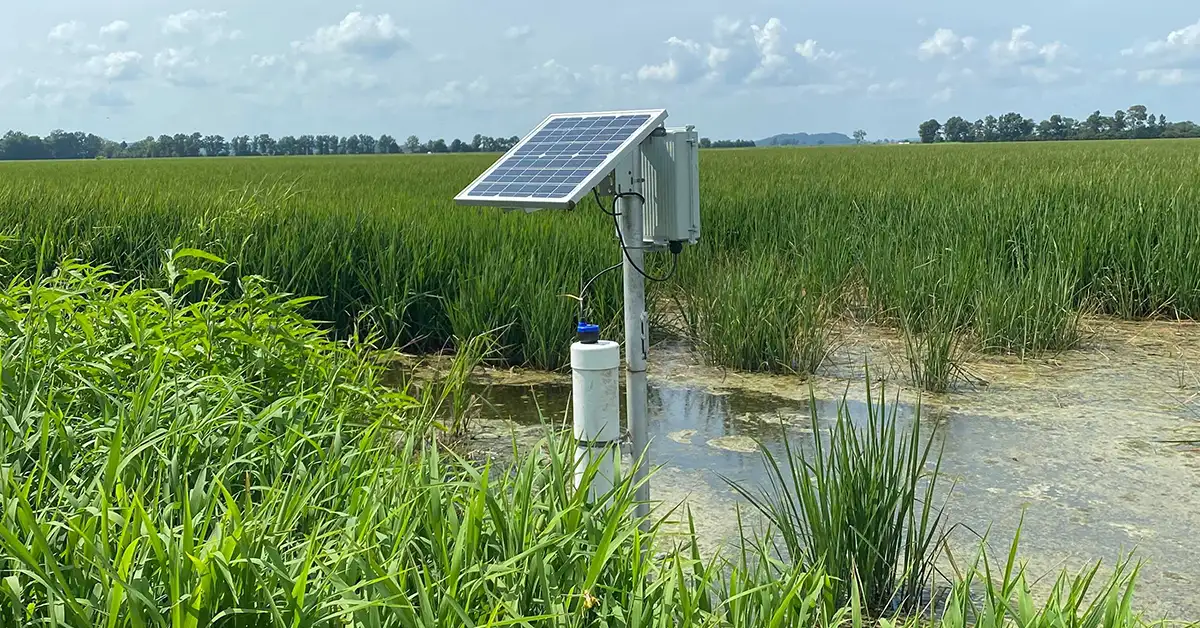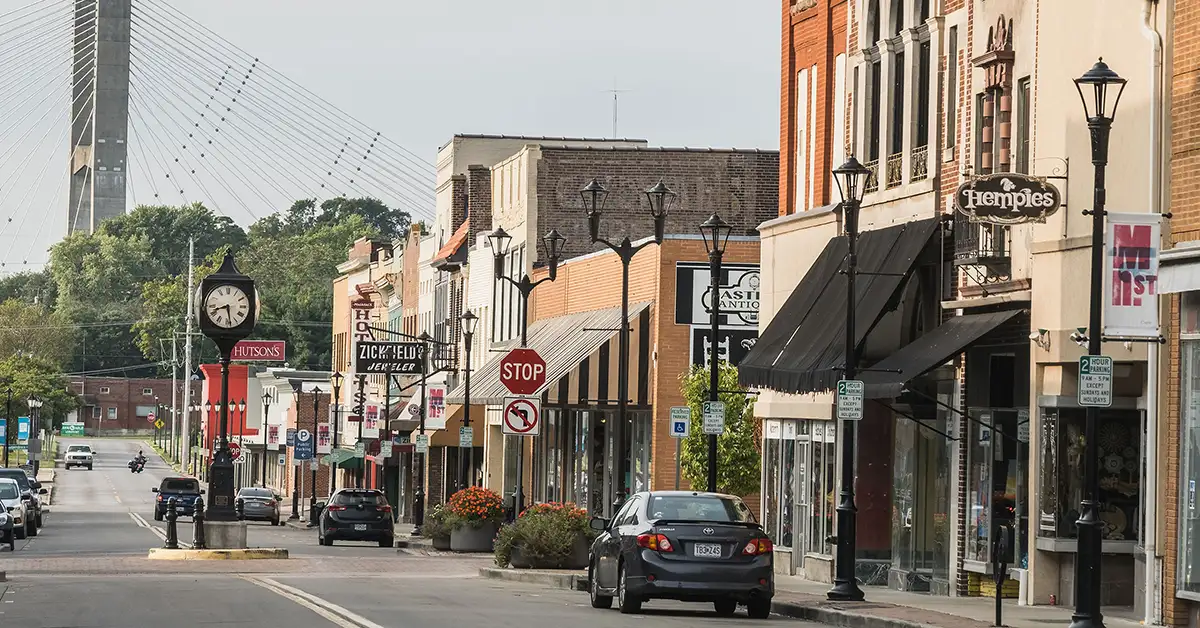
The Southern Missouri Bet - Rural America Deserves Venture Capital
Despite the overwhelming evidence of the lack of venture capital available in rural regions, local investors are challenging conventional wisdom and investing in local tech startups.
June 9, 2025
The numbers tell a stark story that every rural entrepreneur knows by heart. Less than 1% of venture capital reaches businesses outside major metropolitan areas, even though rural communities represent 12% of America's workforce and businesses. From Silicon Valley boardrooms to Manhattan offices, the conventional wisdom whispers that innovation happens in cities—period.
But in an inspiring entrepreneurship center in Cape Girardeau, Missouri, a group of local investors is writing a different narrative entirely. They're betting their own money that venture capital in rural America isn't just possible—it's necessary, and long overdue.
The story begins with success begetting success. When a group of Southeast Missouri investors recently cashed out of a Florida medical software startup, they faced a choice that defines our economic moment: reinvest those proceeds in coastal venture funds or stay home and build something entirely new. Led by Jeff Maurer of Mayson Capital,1 these investors chose to prove that venture capital works in zip codes where cornfields meet innovation labs.
"We want to create good, meaningful jobs in Southern Missouri while hoping to generate competitive returns," explains Maurer, whose own investment philosophy centers on building regional businesses with transformative potential. His group has committed over $1.5 million toward the Innovate SOMO Funds,2 a groundbreaking dual-structure venture fund that could reshape how we think about rural entrepreneurship.
A Model Borrowed from Unexpected Success
The Innovate SOMO Funds didn't emerge from a vacuum. They're modeled after LaunchNY's3 proven dual-structure approach, which combines nonprofit and for-profit components to serve entrepreneurs across 27 counties in Upstate New York. Since 2012, LaunchNY has deployed millions in capital, backed 55 companies, and attracted $1.6 billion in follow-on funding for their portfolio—all while operating far from traditional venture capital centers.
What makes the dual structure so effective? It addresses the fundamental tension in venture capital between patient capital and investor returns. The nonprofit component, funded through grants and charitable contributions, provides patient money for early-stage companies that need time to develop. The for-profit fund attracts traditional investors seeking market-rate returns. Together, they create a financing ecosystem that works for rural entrepreneurs who often need longer runways and different risk profiles than their urban counterparts.
The Center on Rural Innovation's4 research validates this approach. Their recent report, "Rural America's Struggle to Access Private Capital," documents how rural businesses receive less than 1% of VC funding despite comprising 12% of all US businesses. Even more striking: rural entrepreneurship rates have plummeted from 20% in the 1980s to just 12.2% in the 2010s, directly correlated with this capital drought.
Codefi Foundation's creation of Innovate SOMO Funds represents a direct challenge to these trends. Operating across 47 counties in southern Missouri—71% of which are rural—the fund targets pre-seed and seed-stage technology startups with investment ranges of $50,000 to $200,000. Their goal: raise $4 million total to seed 25-30 tech startups across a region that traditional venture capital has essentially ignored.

When Agriculture Meets Innovation
The timing couldn't be better. Agricultural technology represents one of the fastest-growing sectors globally, with the market projected to grow from $25 billion today to $45-80 billion by 2030. Precision agriculture alone is expanding at 12-15% annually, driven by everything from GPS-guided tractors to AI-powered crop management systems.
"We see tremendous opportunities in ag-tech businesses, from irrigation systems to drones," notes Maurer, whose investment thesis recognizes that rural America sits at the intersection of technological advancement and agricultural necessity. The USDA estimates that rural broadband combined with precision agriculture could generate $47 billion in annual economic benefits—but only if rural entrepreneurs can access the capital needed to build these solutions.
Recent success stories prove the potential. Agile Space Industries, based in rural Durango, Colorado, secured multiple funding rounds including Opportunity Zone investments and recently landed a $30 million Space Systems Command contract. Their rural location provides advantages: lower costs, access to testing facilities, and a workforce that values stability and community connection.

The Missouri Advantage
Missouri brings unique strengths to this equation. Missouri Technology Corporation's5 comprehensive strategic analysis identified access to risk capital as the highest priority challenge facing state entrepreneurs, but also documented significant assets: world-class research universities, agricultural expertise, central geographic location, and lower operational costs.
The state's innovation ecosystem extends well beyond the traditional St. Louis-Kansas City-Columbia triangle. In Springfield, the efactory6 provides southwestern Missouri entrepreneurs with incubation services and connections to Missouri State University's research capabilities. In Cape Girardeau, codefi7 has spent 11 years building rural innovation programming that demonstrably doubles participants' average annual income.
Codefi and efactory joined forces in 2022 to launch the Southern Missouri Innovation Network,8 serving the southernmost 47 counties in Missouri. And only a few weeks ago, the Missouri Department of Economic Development announced a nearly $3 million grant9 from the U.S. Department of Treasury, which will effectively expand the network statewide. This distributed innovation network creates opportunities that concentrated urban ecosystems often miss. Rural entrepreneurs and the nonprofit business organizations that support them understand agricultural and manufacturing markets, logistics challenges, and community needs in ways that coastal or urban startups simply cannot replicate.

Proving the Model Works
The upcoming Invest SOMO10 event on June 25-26 at efactory in Springfield represents more than a funding announcement—it's a statement of intent. This kickoff for the Innovate SOMO Funds will showcase southern Missouri's innovation ecosystem while connecting regional entrepreneurs with investors who understand rural market dynamics.
What makes this initiative particularly significant is its positioning as the only regionally focused seed fund outside of St. Louis, Kansas City, and Columbia. While other states continue consolidating venture capital in major metropolitan areas, Missouri is pioneering a distributed approach that keeps talent and capital in communities that need both.
The early momentum proves the model's viability. Beyond Maurer's investment group, the fund has attracted commitments from the Hatch Foundation11 and other private investors in Springfield, Missouri, The Bank of Missouri,12 and state and federal government grant funding. This combination of private capital, philanthropic support, and state-federal backing creates a sustainable foundation for long-term impact.
The Broader Bet on Rural Innovation
What's happening in Southern Missouri reflects broader trends reshaping American entrepreneurship. Remote work capabilities, improved rural broadband infrastructure, and growing interest in quality-of-life factors are drawing talent to smaller communities. The question isn't whether rural entrepreneurship can succeed—it's whether rural communities can access the capital needed to compete.
The statistics remain daunting. Only 6% of new tech jobs created between 2017-2022 were in rural areas, and traditional venture capital continues concentrating in fewer geographic locations. The Bay Area alone captured 57% of total U.S. venture funding in 2024, leaving vast regions underserved.
But initiatives like Innovate SOMO Funds are beginning to change this calculus. By proving that venture capital in rural America generates interest from investors while creating meaningful economic impact, these regional funds are writing a new playbook for American innovation.
The Southern Missouri experiment represents more than a funding initiative—it's a declaration that innovation happens everywhere, not just in established tech hubs. For rural entrepreneurs tired of hearing "no" from distant investors, it offers something more valuable than capital: proof that their communities deserve a seat at the innovation table.
As Maurer and his fellow investors prepare to deploy their Florida startup proceeds in southern Missouri, they're making a bet that extends far beyond financial returns. They're betting that rural America's next chapter will be written by entrepreneurs who never left home—and investors wise enough to back them.
Join the Movement
Investors who wish to contribute capital to Innovate SOMO Funds or request an invitation to the Invest SOMO event can:
Relevant Links
1Mayson Capital
2Innovate SOMO Funds
3LaunchNY
4Center on Rural Innovation (CORI)
5Missouri Technology Corporation
6efactory
7codefi
8Southern Missouri Innovation Network (Innovate SOMO)
9Codefi and efactory Selected to Receive $2.94 Million Federal Grant for Statewide Expansion of Entrepreneurial Support Services
10Invest SOMO
11Hatch Foundation
12The Bank of Missouri